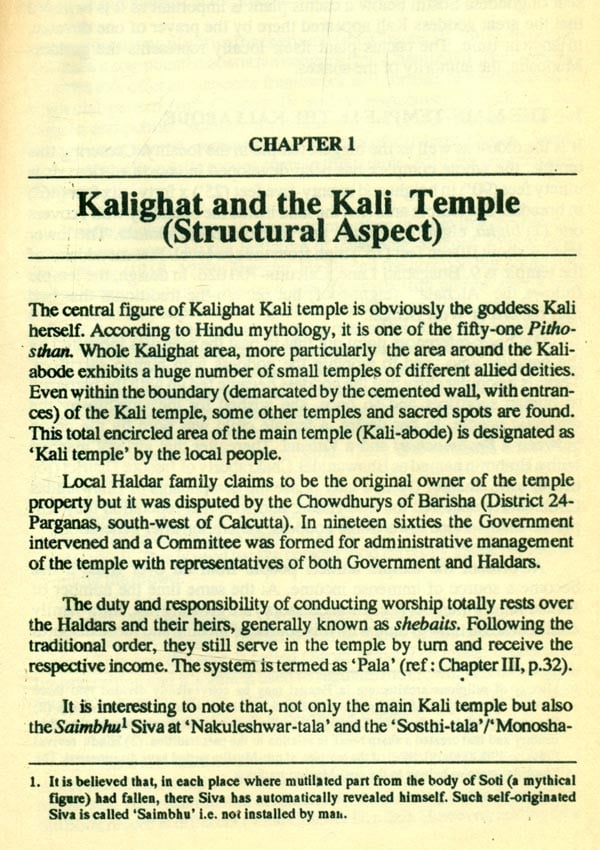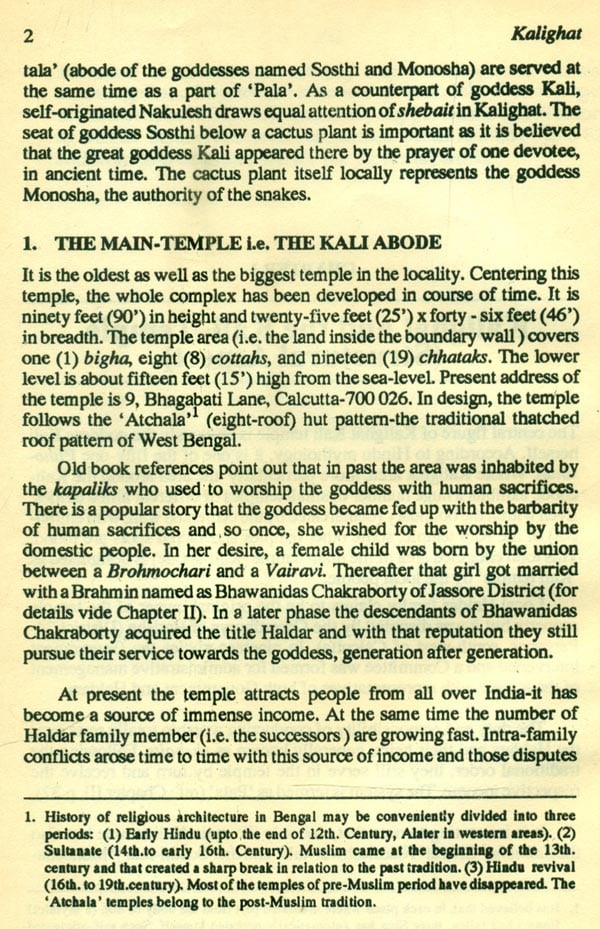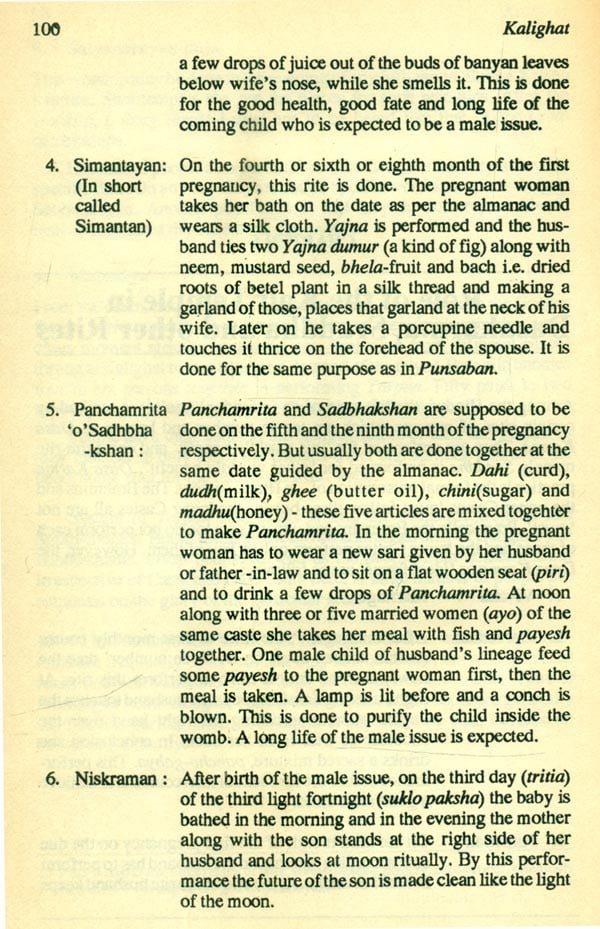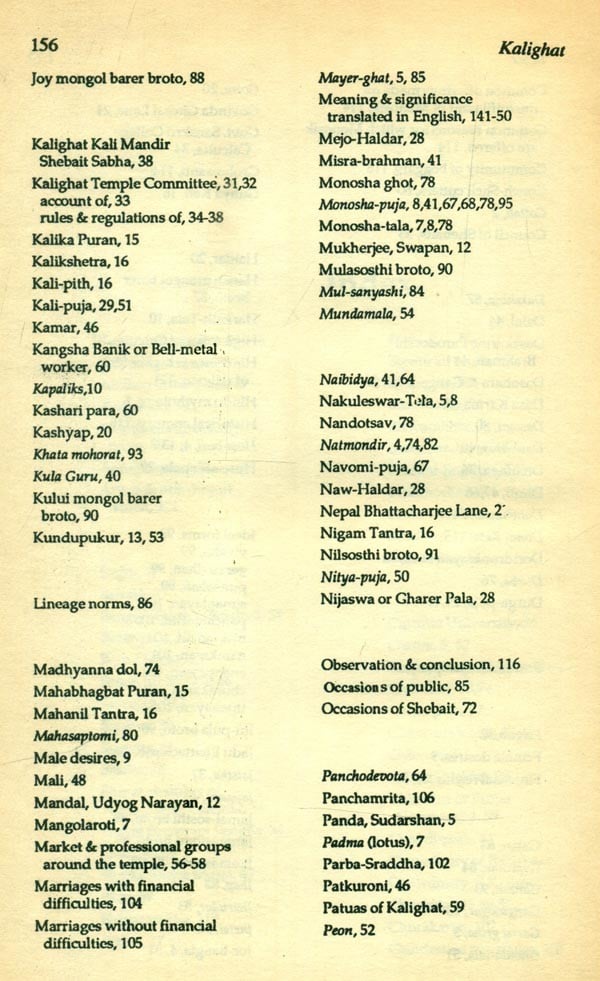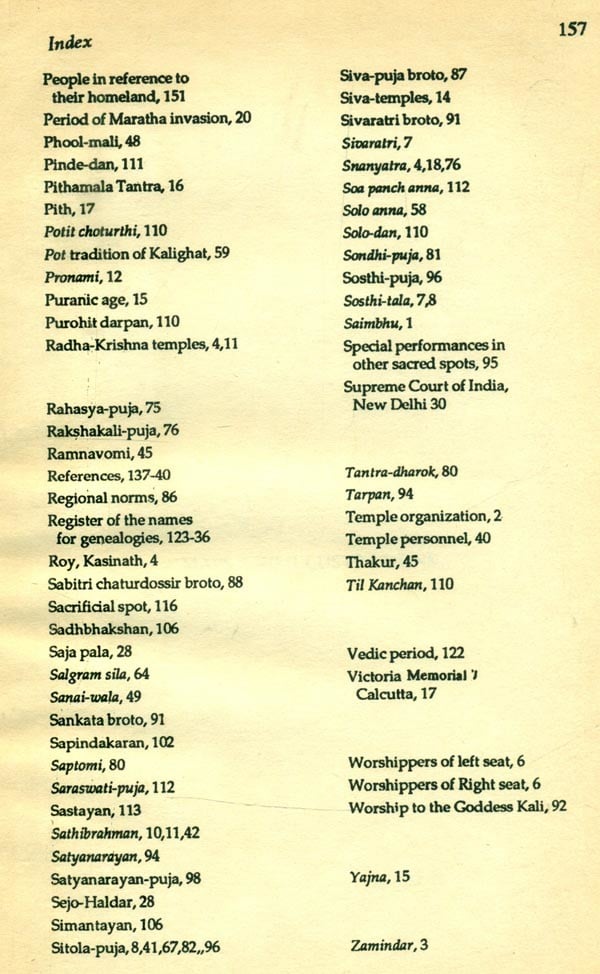About the Book The main focus of this study is the Kall Temple of kalighat, one of the most sacred pilgrim centres of Hindus in India. It is an effort to weigh the radiating influence of a traditional religious center over the contemporary social life. The temple, devotees and all sacred performances at kalighat have been discussed in detail with emphasis on the changing pattern of religious practices, the Utility of pilgrimage for the promotion of trade and market complex, diversified role of sacred specialists, evolution and new perspective in sacred tradition. The work id the outcome of intensive fieldwork. Here the main consideration is kali Puja, an act of reverence towards the power goddess kali which is an ancient, most popular, complex as well as simple from of Hindu religious rite involving critical preparation and widespread participation. The detailed description and subsequent interpretation of the rituals at kalighat present-day Hindu society as it emerges through different patter of involvement into it The basic elements which have been highlighted in the human disposition, changing value system and rules of conduct in an age-old society. On a broader theoretical level she intends to discuss the problems os myths and religion, ideology and social structure---a microcosm of Indian civilization. The Work not only provides an elaborate ethnographic account in the perspective of socio-religious study, this can also serve as a model in the study of a civilization.
About the Author Dr. Indrani Basu Roy stood first class first in B.Sc. (Hone.) Anthropology from Calcutta University followed by M.Sc. in Anthropology and research work. Later she underwend two professional training courses conducted by State Government of West Bengal and Voluntary organization.
Dr. Basu Roy has worked with different voluntary organization to promote the objective of social development. Further, she has participated in many seminars and workshops of national repute. In her workshops of national repute. In her working span she wrote ten research papers which have been published in various scientific journals. Subject of those papers cover a wide range of study such as ethnography, social anthropology she is engaged in an independent research project sponsored by a vboluntary organization in Calcutta.
Introduction Since ancient times, the vast expanse from Himalayas to Kanya Kumari has been known as 'Bharat-Varsha'. We find references in the Vedas, the Puranas, the Epics and the writings of foreigners about the boundaries of the Indian Subcontinent -the great Himalayas in the north and other three sides are encircled by ocean. If we look into religious Constitution of India, we find the bulk of the population as Hindus. Indian Civilization refers principally to the Hindus, the genesis of which lies in the synthesis between Aryan and non-Aryan cultures. Aryans, the carrier of Sanskritic tradition were not only highly intellectual people, they used to hold a very rich religious philosophy which had been reflected in the works- 'Vedas'. When they invaded India and settled themselves in Indian soil, their powerful religion engulfed the baffling variety of local beliefs, cults and ritualistic practices. The diverse cultural traditions gradually crystallized into a single system. It is interesting to note that the evolved Hindu culture was nothing but a compromise and co- existence of both the Sanskritic (Sastriya) and native (Loukik) traditions. For example, it is seen that every rite and ritual of Hindu possess two distinct parts - The 'Sastriya' part where Sanskritic hymns are essentially spelt by the help of Brahmin (Religious specialist) and the 'Loukik' part where non-Brahmins or females perform the regional norms. The Sanskritic part is usually short and necessarily same for all the Hindus irrespective of their dissimilar geographical placement and linguistic difference. On the other hand, 'Loukik' performances follow no uniform pattern and vary greatly. This fulfils the concept of Great and little tradition as shown by Robert Redfield in the field of Civilizational study. According to Redfield, continuity of civilization is handled in terms of the notion of 'Cultural Structure'. The cultural structure of a particular civilization consists of the structure of its cultural traditions and the structure of its thought and values.
**Contents and Sample Pages**


